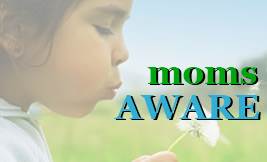Mycotoxins in Food (Part Two)
Mycotoxins are common occurrences in our food supply. If there is any type of health liability, the ingestion of mycotoxins only adds to the toxic load. There can be great benefit, therefore, in mycotoxin avoidance.
The veterinary world is well aware of this truth. The Center for Veterinary Medicine, part of the Food and Drug Administration, gave a startling presentation in 2006 listing specific mycotoxins and some of the health effects for animals and humans.
The following excerpts highlight some of the key findings of Dr. Michael Henry, as presented to the Risk Management Agency:
Aflatoxins
- Produced by Aspergillus sp. (A. flavus and A. parasiticus)
- Common feed substrates such as corn, cottonseed, peanuts, and sorghum.
- Occur most commonly in warm, humid regions of the south and central regions of the U.S.
- High levels of aflatoxins are associated with above-average temperature and below-average rainfall (micro-climate)
Vomitoxin
- Produced by members of genus Fusarium (especially F. graminearum)
- Commonly found on wheat, barley, rye and oats
- Reported most frequently in cool, temperate regions (northern U.S. and Canada)
- Member of the trichothecene family of mycotoxins
- Inhibitor of protein synthesis, affecting GI tract and immune system
- Swine most susceptible -- causing vomiting and feed refusal
Fumonisins
- Produced by Fusarium sp. (F. verticillioides)
- Found worldwide, mainly in corn and particularly corn screenings
- High levels associated with hot and dry weather, followed by periods of high humidity
- Three major fumonisins in feed are B1, B2 & B3 (B1 + B2 + B3 = total fumonisins)
- Most susceptible species are horses (equine leukoencephalomalacia) and rabbits
- Suspected carcinogens
Ochratoxin A
- Produced by Aspergillus sp. (A. ochraceus) and Penicillium sp. (P. viridicatum)
- Highest levels usually found in cereal grains (corn, barley, wheat and rye)
- At least nine ochratoxins identified, but ochratoxin A is the most common and has the greatest toxicological significance
- Nephrotoxic and a suspected carcinogen
- No FDA action, advisory or guidance levels established for ochratoxin A in U.S. feed
Zearalenone
- Produced by Fusarium sp. (primarily F. graminearum)
- Common substrates are corn, wheat, barley, occasionally oats
- Production favored by high humidity and low temperatures
- Estrogenic mycotoxin, swine most susceptible – vulvar swelling in gilts
- Toxicity related to reproductive system
- No FDA action, advisory or guidance levels established for zearalenone in U.S. feed.
The full report can be viewed here.
The website Know Mycotoxins offers valuable information on mycotoxin management for animal feed. Here, too, we see a striking understanding of the dangers of crop contamination:
Any growing crop, including forage and cereals, is susceptible to mould, with Fusarium types being the main concern. Fusarium moulds can produce mycotoxins on the growing plant. Whilst the moulds themselves may not survive the transition from field to feeding trough, the mycotoxins will remain intact, though invisible to the naked eye. Feeds may therefore appear and analyse as high quality, but may harbour a mycotoxin(s) challenge.
From my perspective, what's healthy for animals is also healthy for me. Animals are at risk when they eat contaminated food. Are we any different?

